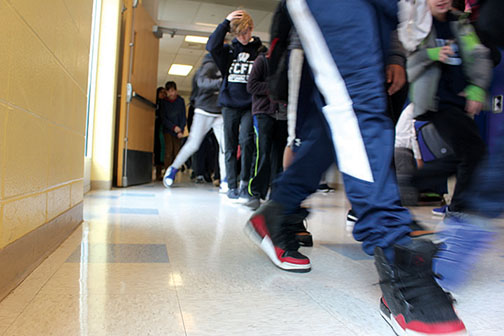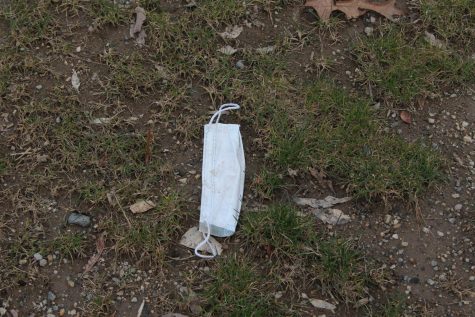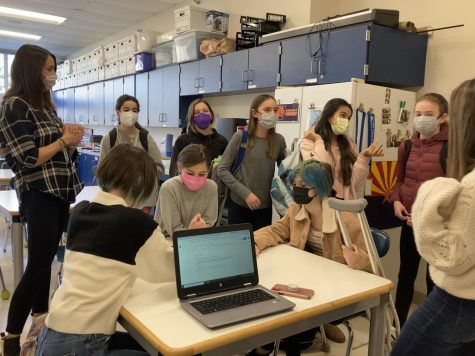From Here To There In 3 Minutes

Students heading to class. How many will make it there on time?
Students sitting neatly at their desks, inquisitively referring to their notes, everyone’s attention on the teachers lesson, accomplished all before the bell rings. This is a fantasy for most Bedford teachers compared to what a classroom actually looks like after the bell rings.
The reality is, when the bell rings, five students are clustered around a desk talking. One student is talking with the teacher. Another student is playing a game on his laptop. Ten students wander into the classroom as late as three minutes after the bell, a few have late passes.
Being late seems to be the constant struggle for Bedford students, and their teachers have a lot to say about it.
When it comes to why students are late, teachers either blame the student or the clock.
“For special subjects, people have to travel quite a while. People have to check with their friends, go to their lockers, talk to teachers, etc.,etc., and three minutes is a stretch,” said Mr. Don Savage, a health teacher at Bedford.
However, Brian Kurtz, a sixth grade science teacher, argues that students are in control. “Students are usually late because they are talking to their friends in the hallway.”
A lot of teachers believe that three minutes is enough time, if students don’t get distracted on their way to class.
Exceptions are everything when determining a tardy. Tardies can become a serious problem if they start to add up.
According to Mr. Savage, “For some students its out of their control. The exception is when people come from the other side of the building.”
Mr. Kurtz says, “The only reason to be late to class is if you have an injury.” But no matter the case is, teachers know that everyone is late once in a while.
All of this can be avoided through proper planning and the power of focusing. If students know they are going to be a late, it’s best to talk with your teacher and explain the circumstances.
According to Dr. Dan Cortright, “I’d prefer it if students checked in with me if they are going to be late because they have to go to their locker.”
Other teachers prefer students do something in advance. Mrs. Lynne Karmen says, “Some kids don’t have the luxury of going to their locker between a class. You have to plan to go to your locker before class.”
When students are constantly late, teachers have to enforce punishment. Some teachers just ask their students to be more responsible. Mr Kurtz says “I tell them they are late, and we talk about why they are late.”
Other teachers have more routine consequences. Mrs. Nicolina Pugliesi says, “I keep a tardy list so I can track tardies. When a student gets a certain number, they get a lunch detention.”
For some students and teachers, three minutes seems like plenty of time to get to each class. But most agree that it really just depends on your own situation and schedule. There are exceptions, consequences, and ways to avoid tardiness. Dr. Cortright says, “For the most part, three minutes is enough time to get to class.”












Tucker • Feb 15, 2018 at 10:55 am
I totally disagree with some of these teachers. Some students HAVE TO walk across the school then walk back across the school. Also you can’t WALK across the school and back in 3 minutes. Keep in mind the students can’t bring all of there binders at once and it’s hard to navigate this. One more thing is the reason some friends talk is because they NEED TO. Sometimes something unexpected comes up and you need to tell someone something. For example “Hey Joe my mom said you are coming home with me”. “Thanks John”. See if John did not do that then that could of been bad. So in conclusion I think we need more time.